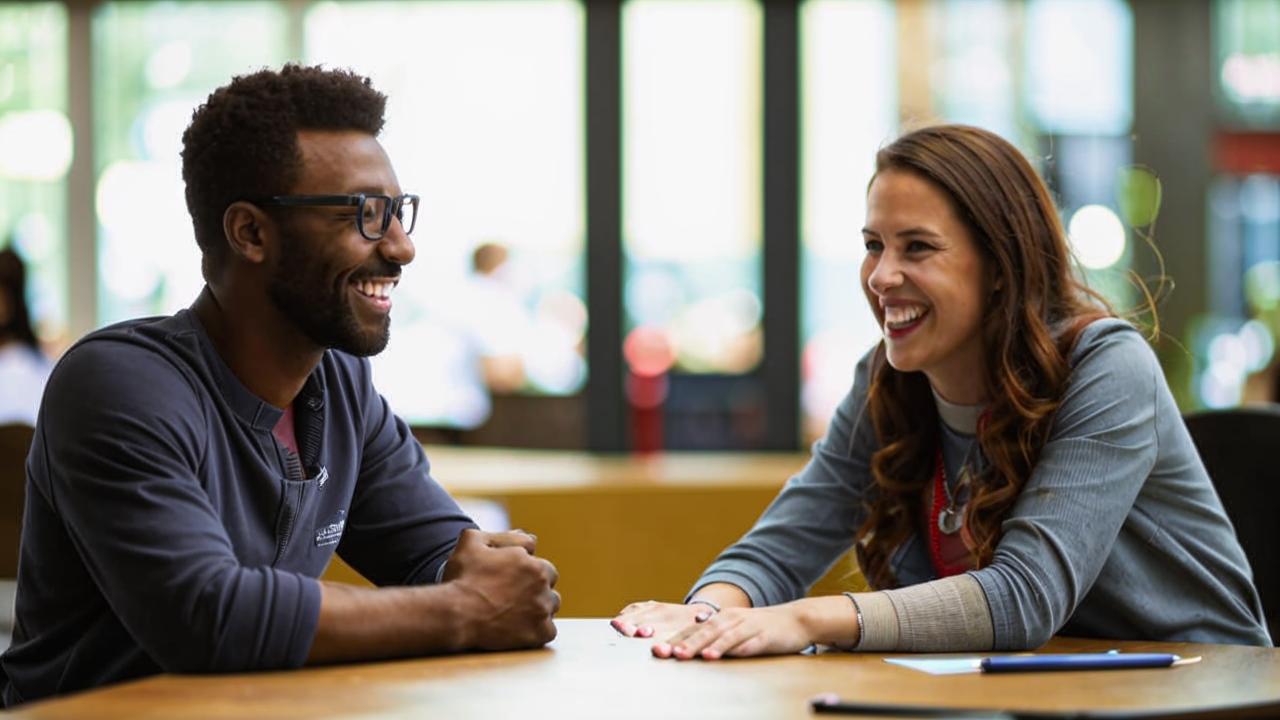
CBT therapist, expert of the online school of psychological professions “Psychodemia”
“Are you familiar with the animal chameleon? If you answered the question positively, then you definitely remember about its ability to change color depending on the environment. It is this property that allowed the chameleon to get on the pages of psychology textbooks. The human ability to change depending on the environment was named in his honor. Yes, we’re talking about the chameleon effect.”
The chameleon effect manifests itself in the unconscious imitation of postures, mannerisms, facial expressions and actions. For example, when a person with whom you spend a long time, begins to repeat a lot of things after you. Literally duplicates behavior, gestures, manner of speech. All people sometimes copy each other. Why do we do it and is it realistic to fight such manifestations?
Why do we copy others?
1. Psychological need for belonging
This phenomenon was first examined in 1996 by scientists Tanya Chartrand and John Bargh. They found that observing someone else’s behavior automatically increases the likelihood of imitation: copying the model and following it. Scientists also proved that this has a positive effect on a person’s social interactions and improves the quality of relationships.
Another important point that psychologists Chartrand and Bargh discovered: sensitive and receptive natures are more likely to imitate other people. Also importantly, those who don’t really understand the feelings of the person they are copying can arouse anger and appear fake.

2. Social norms and conformity
The presence of social norms in society also requires people to definitely repeat after others. After all, this, among other things, provides stability and security of a person, his confidence in himself and the environment.
There is also conformism – a change in behavior or opinion under the influence of real or imagined pressure from another person or group of people.
The most famous studies on the identification of conformism were the experiments of Polish psychologist Solomon Asch. Let us dwell on one of them in detail.
Solomon Asch’s experiment
As it is supposed to all decent psychologists-researchers, Solomon Asch did not tell the subjects the purpose of the experiment. He conducted it on students who thought they were participating in a vision test.
In fact, the purpose of this study was to see how the subjects would react to a mistake made by the majority.
The experiment required participants to examine 18 cards and answer a question about the length of the lines depicted on them. They had to do this after hearing the answers of the dummy subjects.
For the first two questions, all participants – both control and fake – gave the same, correct, answers. In the third step, the actors began to intentionally make a mistake, which caused the control subject to become confused.
If the person continued to answer correctly, disregarding the fake incorrect answers, he or she became uncomfortable. The bottom line. 75% of the test subjects repeated the majority incorrect answers and felt much less discomfort than the other participants.
Thus, Solomon Asch concluded, the feeling of belonging to a community and not opposing oneself to it relieves unnecessary tension and is perceived as much more pleasant than asserting one’s point of view.

Modeling behavior
Let’s understand what behavior gives us. Through it we show ourselves and our uniqueness.
Everyone from birth has the ability to read the behavior of others, sensitively catch their attitude. All thanks to biological reasons. For example, mirror neurons – nerve cells in the brain, which are excited both when performing a certain action, and when observing and repeating it for others.
The presence of these nerve cells was proven in 1996 by Italian neuroscientist Giacomo Rizzolatti. He conducted a very interesting experiment with a monkey, which watched a man taking raisins from a plate and eating them. It turned out that when she watched what was happening, then in her head also excited nerve cells. Just those “mirror neurons.”
That is, even though she did not perform the action, her brain read the picture from the outside and placed it in its own sensory experience. It was as if the monkey was doing the manipulation itself.

There are two types of mirror neurons. The first stimulates our motor systems, and we contract our muscles as another person would.
The second is related to empathy, empathy, compassion. We are literally able to take over another person’s sensory experience, their pattern of behavior, if we notice that it allows us to better adapt.
In our lives, each of us learns those strategies that bring success or at least a positive result. For example, wanting to like someone, we observe the object of our attention and in some ways adopt his way of life. Especially if we notice that this elicits a positive reaction.
The influence of group dynamics
It is also important to talk about such a phenomenon as group dynamics. This is a process that occurs within a collective of people and affects their interaction, behavior, and decision-making.
There are many different processes going on in any group. Let’s look at some of them. Let’s start with identification with the group. What is this? When people identify themselves with a certain group, they begin to perceive other group members as “their own”. Therefore, they show more sympathy for them and are more willing to cooperate with them.
This leads to stronger bonds and greater group effectiveness. “We” are no longer seen as a collection of individuals, but as a whole organism that strives for something in common. Hence, similar patterns of behavior follow.
Another important process is group pressure. This is also a social phenomenon. Because of it, people agree with the opinion of the majority in their community. Recall Asch’s experiment. Group pressure is a kind of instrument of social influence on each of its participants, which preserves the integrity of the group and increases its stability.
Group pressure can be formulated in different ways:
- coercion,
The most famous study of group pressure is the experiment of Muzaffer Sherif, Ph.D., a psychologist at Columbia University (1935).

Sherif’s experiment on group pressure
The question the scientist was interested in was: what would a person in an unusual situation with no reference points in the external field do? If a group gets into it, how will the interaction affect the individual’s behavior?
In the experiment, the subject was plunged into total darkness. Having no reference points in space, he had to estimate how the suddenly appearing and extinguishing light source moves. The participant of the experiment had to say how far he moved.
Since the subjects could not understand where the reference point of the light movement was and how far it had moved, they gave different evaluations in their individual work. However, at the second stage of the experiment, when the participants began to work on the same task together, they began to give estimates that were close to the group average.
This is how Mouzafer Sherif experimentally proved that people tend to agree with the opinions of others and even trust the group more than themselves.
We copy other people for a number of reasons. There are social mechanisms behind it: group dynamics and conformity. It’s also biological – the workings of mirror neurons. This ensures our own stability and security, and allows society to adapt effectively and quickly to changing external conditions.
Man is a social animal, and it would be wrong to dismiss this. The mechanism of imitation is important for the survival of our species. At the same time, you need to remember that copying the behavior of others should be in moderation. Otherwise, you risk anger and irritation on the part of the person you are imitating.






